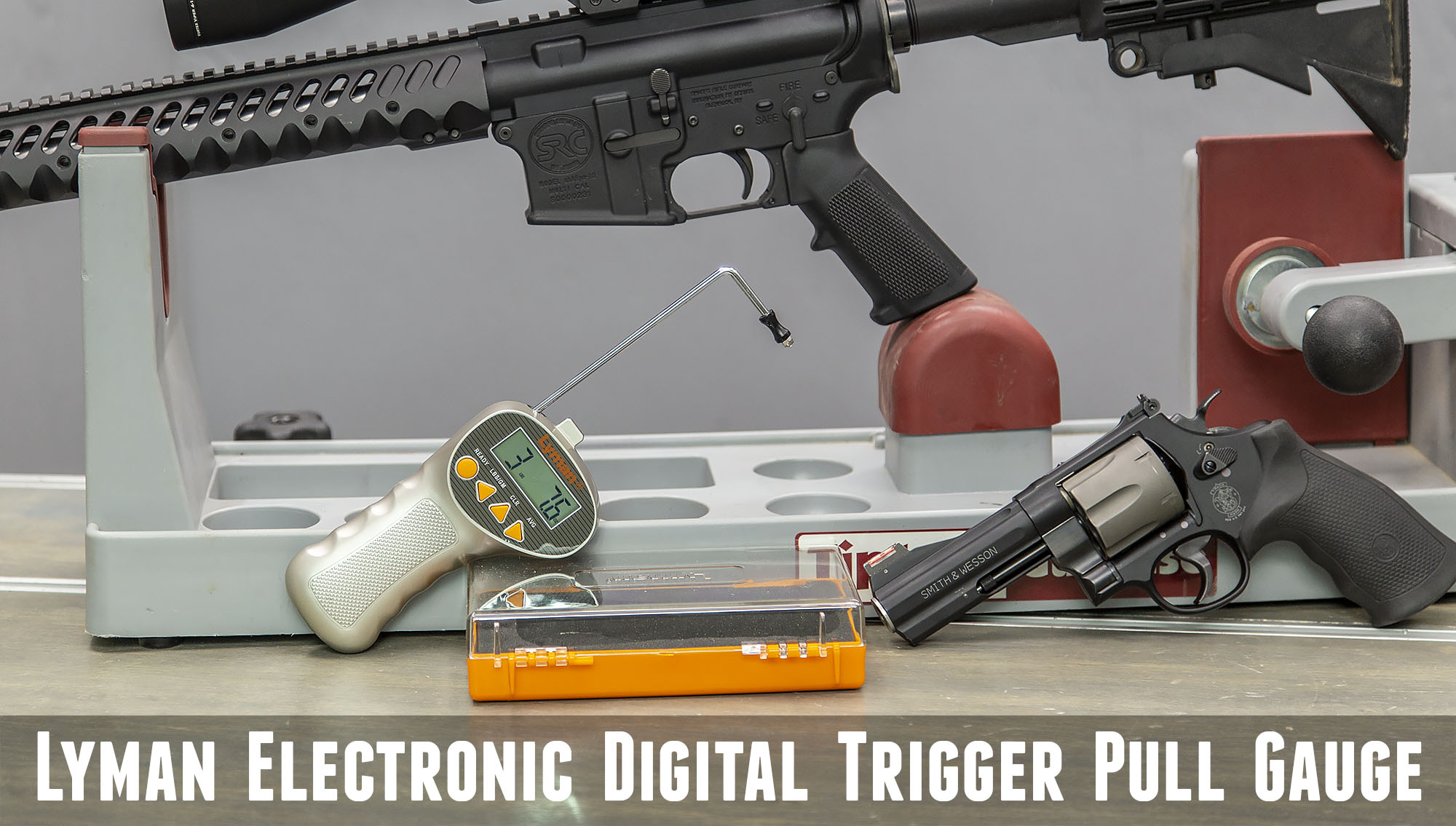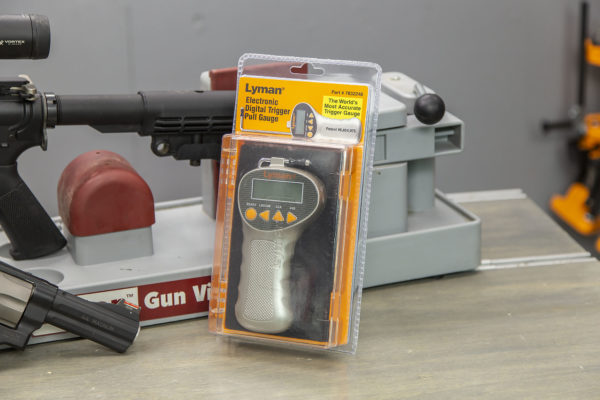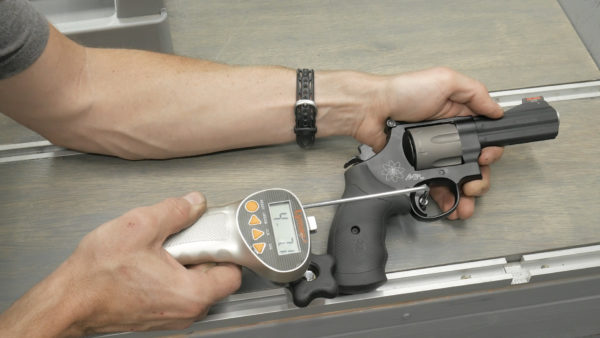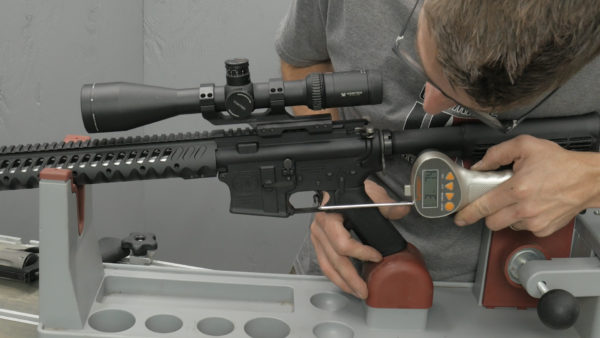How do you know *for sure* how your trigger is performing? There are a variety of options spanning simple mechanical gauges all the way up to the DVORAK TriggerScan for “laboratory grade” trigger profiling. If all you need is an accurate peak force measurement, the Lyman Electronic Digital Trigger Pull Gauge is a great option. Let’s check it out!
Lyman Electronic Trigger Pull Gauge Overview
The Lyman Electronic Digital Trigger Pull Gauge comes with everything you need to measure trigger pull weights for rifles, pistols, and shotguns:
- Trigger Pull gauge unit
- Padded/fitted case
- Batteries
- Instructions
And using the trigger pull gauge is super-intuitive:
- Confirm your firearm is unloaded and nothing is chambered
- Re-confirm your firearm is unloaded and nothing is chambered
- Cock the firing mechanism (skip this step when testing a revolver in double-action mode)
- Extend the rod into the position desired (can index in each 90 degree quadrant)
- Turn on the unit (press any button) if not already on
- Press the “Ready” button, confirm audible “chirp”
- Place instrument rod roller in center of trigger curve
- *With firearm firmly held (gun vice, against stop, etc) pull backwards with rod parallel to bore axis until the hammer/striker falls/actuates
- Read measured value
*Note: The readings provided by this instrument will only be consistent if you hold/restrain the firearm and use the *exact* same testing speed and motion. It will take some practice, just like with any other precision gauge or instrument.
Here’s my handgun testing setup:
Note the “stop” I put in place on the Ultimate Reloader Bench System track- this helps to provide consistent readings. And here’s a test run on my 25-45 Sharps AR-15:
In both cases I was careful to align the instrument reading rod with the axis of the bore- an important part of getting accurate and consistent readings.
Specifications
Here are the specifications and product description for this tool as provided from Lyman Products:
Works with almost any rifle, shotgun or handgun.
Specifications:
Measuring Range: 1oz – 12lbs / 2.8g – 5.4kg
Resolution:
0 – 5lbs: ± .1oz
5 – 12lbs: ± .5oz
0 – 2.2kg: ± 2g
2.2 – 5.4kg: ± 10g
Lyman’s revolutionary Digital Trigger Pull Gauge is designed to be the fastest and most accurate trigger pull gauge available. The state-of-the-art strain gauge technology allows for accuracy of 1/10 ounce/2 grams. The gauge will read to a maximum 12lb/5.4kg and features a large, easy-to-read LCD display. To operate, simply press the ready button, hook the roller around the trigger of your firearm and pull until the trigger releases. (Make sure firearm is not loaded.) The gauge will display and hold the exact trigger pull weight. For a new reading, just press the ready button and repeat. The gauge will also give you an average of up to the last 10 readings. Switch from ounces to grams with the push of a button. The fully adjustable rod works on any firearm. This is the perfect tool for target shooters, silhouette shooters, gunsmiths, hunters, or anyone who wants to adjust their trigger pull weight accurately and easily. Works with single 9V battery (not included).
Conclusion
At about $60.00 (less if you shop around) this trigger pull gauge is a great deal. It takes a lot of the guess work out of taking trigger readings, and is an essential tool if you need to evaluate your firearm’s trigger (or adjust it). If you are shopping for a trigger gauge, you’ll find the Lyman Electronic Digital Trigger Pull Gauge at Midsouth Shooter’s Supply (I just looked and it was on sale!).
Do you have one of these trigger pull gauges? Please leave a comment to share your experiences!
Thanks,
Gavin






















































































Gavin,
My first question is, has anyone used high speed video to confirm that the scale doesn’t bump up the measurement when the trigger hits the mechanical end of travel or does it lock in the measurement as soon as it detects the sharp release of initial pressure when the sear breaks? Secondly, how much variation is there when the angle is off or the contact point is at a different position on the trigger?
These are the nagging questions that have kept me from buying one.